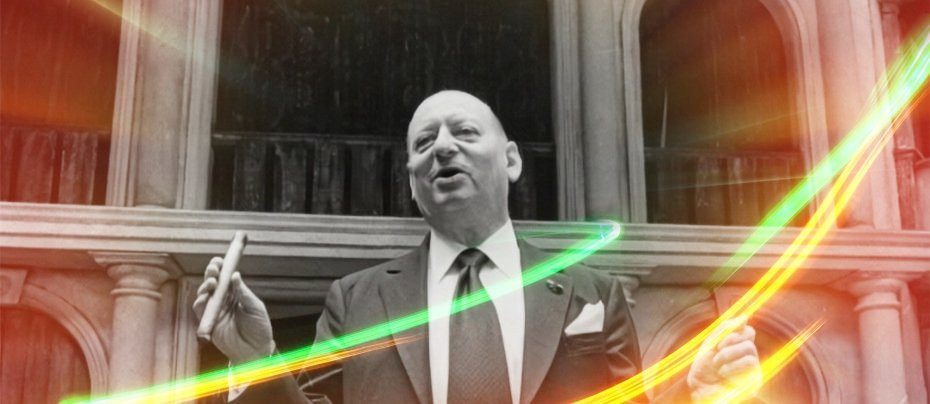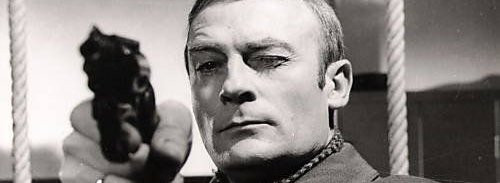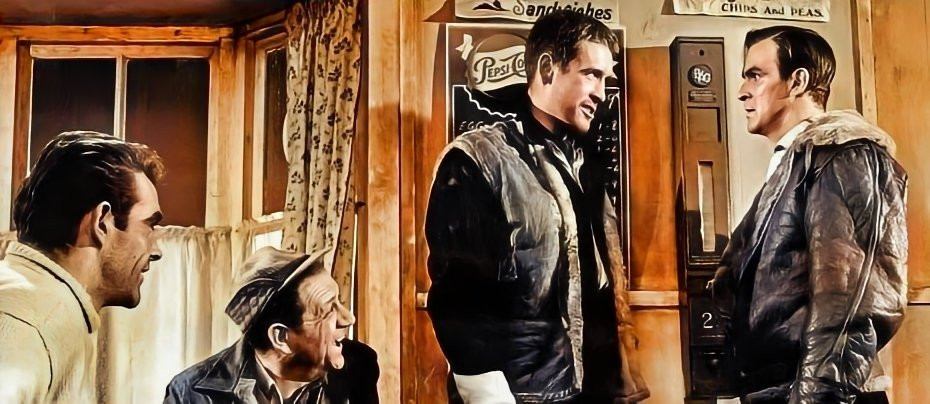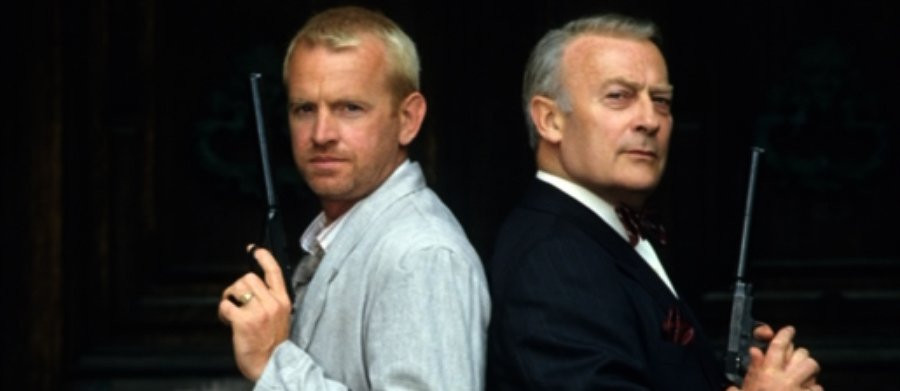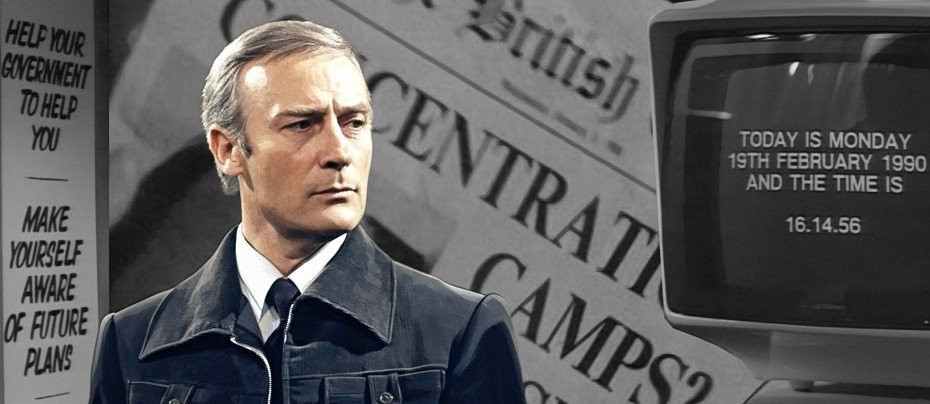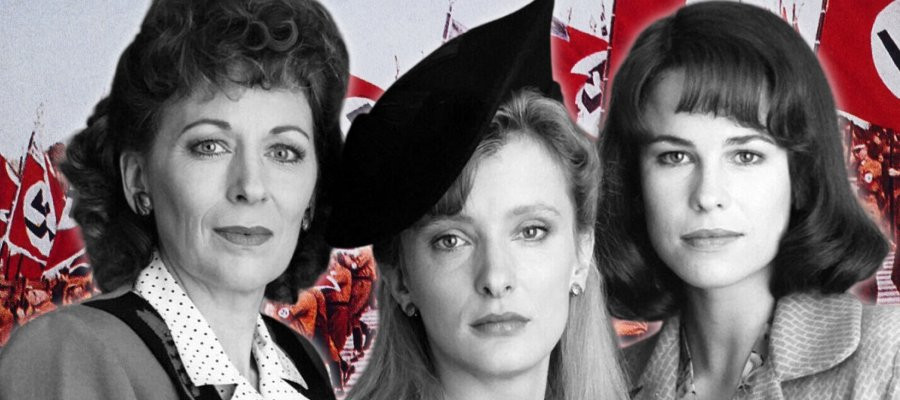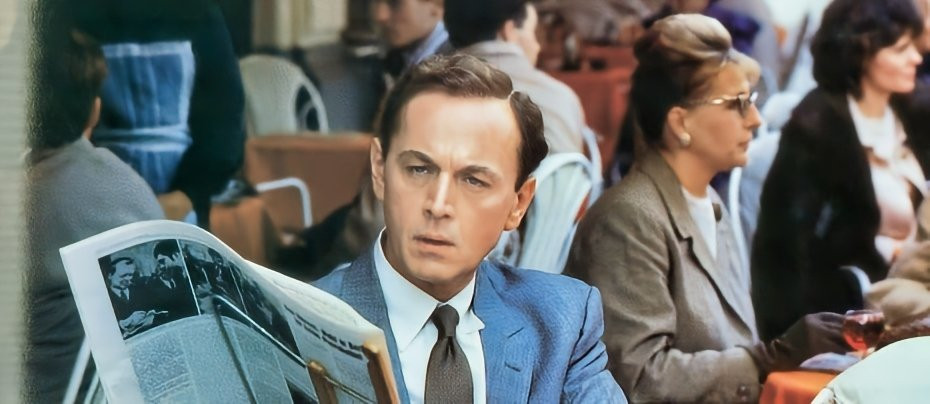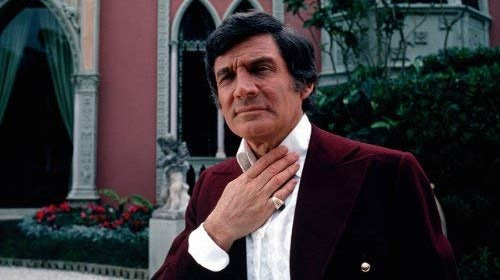
Callan (The Movie)
“although Porter and Egan both give fine performances, one rather misses William Squire and Anthony Valentine”
‘Callan at the Movies’ is written by John Winterson Richards
Like many great many television shows, Callan owes its inception to feature films. Unlike most, it seems to have an enduring influence on cinema.
For all their obvious differences, David Callan is a direct descendant of James Bond. In Doctor No, an effectively unarmed man is killed in very cold blood by a man who knows his victim has no bullets in his gun, talking to him about it first for a few seconds, making it clear that he knows he is helpless, taunting him, prolonging the moment of his inevitable death - and never showing the slightest hint of remorse, then or at any other point in the film. This is the action of a borderline sadist or psychopath, and the shocking thing to audiences in 1962 is that it was also the action of the hero, Bond himself.
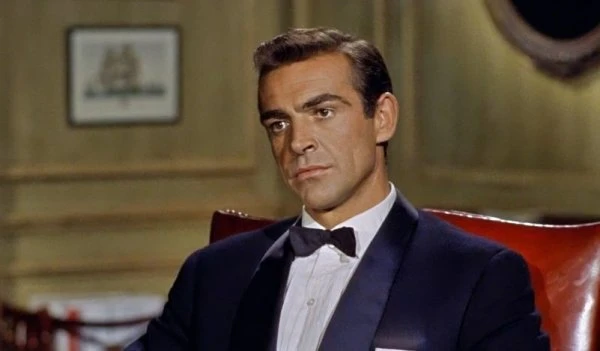
While it is true that the victim was himself responsible for the murder of Bond's friends, the idea that the pitiless State executioner was a protagonist with whom we were meant to sympathise went against almost the whole tradition of cinema until that point. It was always the villain who gloated over his victim and then killed without mercy.

James Mitchell, who wrote Callan, seems to have been struck by this notion that the State might sometimes employ such a man in peacetime - the 1962 audience understood better than today's that such things happen in war - but he took it a stage further by asking if he could really just walk away from what he did without any psychological consequences.
Bond also had an indirect influence, in that his transformation of the spy from a seedy figure in the shadows to a glamorous "superagent" of almost unlimited competence - prompting a tidal wave of "superagent" shows on 1960s television such as The Avengers and The Man from U.N.C.L.E. - provoked a realist reaction of which Callan was later part.
That reaction started very quickly in the cinema, in 1965 when two films came out that seemed determined to debunk Bond and which influenced Callan even more than 007 did.
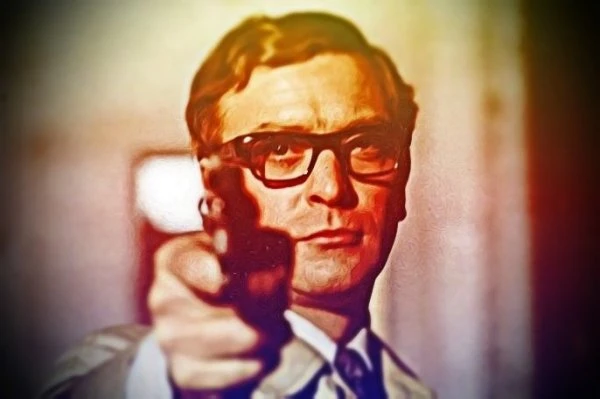
The first was Sidney J Furie's adaptation of Len Deighton's novel The Ipcress File, with Michael Caine as the protagonist, unnamed in the book, called "Harry Palmer" in the film. The public school educated "gentleman" Bond was replaced by a Cockney chancer, and the secret service was revealed as a particularly petty bureaucracy run on a tight budget.
It is not difficult to spot similarities between Harry Palmer and David Callan. Both are working class, intelligent far beyond their formal education. Both have tainted military service records as NCOs and criminal records. Both are reluctant members of the secret service.
There are also many points of similarity between the film and the television show. Both adopt a downbeat style and a subtext of class conflict. Both emphasise the squalor and bureaucracy of professional espionage. Both have discordant modern jazz themes expressive of the urban thriller. Curiously, the theme from Callan by Jack Trombey - the familiar alias of Netherlands composer Jan Stoeckart - who also wrote 'Eye Level,' the theme from Van der Valk, was later released under the title 'This Man Alone,' which seems to reference 'A Man Alone,' the title of a major theme from John Barry's score for The Ipcress File.
The film and the television show even have the same plot at one point: in the highly rated second season finale of the show, 'Death of a Hunter,' Callan is brainwashed as Palmer was in The Ipcress File. Both Palmer and Callan get to live out the working class dream of shooting the boss - even if in both cases it is not the boss they might have preferred to shoot.
There is, however, a huge difference between Palmer and Callan. From start to finish, Harry Palmer is unreservedly a hugely likeable character. He is cheerful, entrepreneurial, and aspirational. He has a developed taste for the good things in life, notably gourmet cooking, clothes, and Classical music. Above all, while he is competent when violent situations are forced on him, he recoils at the idea of killing to order - the sort of thing which is Callan's bread and butter.

The second of the 1965 anti-Bond films, The Spy Who Came in From the Cold, based on the novel by David Cornwell writing as John le Carre, went a stage further by taking away this likeability from its protagonist and increasing the seediness quotient even more. Richard Burton, in arguably his best big screen performance, is totally convincing as the self-hating Alec Leamas, a man who does not seem to care how he hurts innocent people and endangers the life of a naïve young woman in order to engineer the death of a man he rather likes - except, in the end, fatally, he does care.
It is a deeply corrosive film - and never feels anything less than wholly authentic. Cornwell had first hand experience of the people about whom he wrote and it comes across as true even now, despite the author's claim that he only got clearance to publish because it was not.
David Callan is therefore basically Palmer without the amiability, but with Bond's propensity for homicide and Leamas' ruthlessness, seediness, and self-hatred. He lives in a world somewhere between Palmer's and Leamas,' except with one radical innovation...
Where the secret services of Bond, Palmer, and Leamas use subversive methods such as blackmail and, on occasion, assassination at need as standard tools of the trade, James Mitchell proposed the existence of a specialist section dedicated to them.
To a 1960s audience, that was as much a fantasy as anything in Bond. It is perhaps difficult to convey these days, when cynicism and paranoia about the State are almost universal, how naïve and trusting most people were back then. Of course, there were a lot of people around who had taken an active role in the Second World War, and in the rather messy winding up of the British Empire - not least in Malaya, where the young Callan got his hands dirty - and they were under no illusions about the nastiness that was often perpetrated in the name of Queen and Country, but even they seem to have assumed that, at home and in peacetime, Britain was still a land of laws, decency, and fair play.
If few would make the same assumption today, it is only because we have the advantage of the knowledge of dozens of major scandals that were still in the future in 1967 when Callan was first shown. It was Watergate, and the subsequent Church Committee investigations into the CIA, that changed everything. Americans, understandably, became more suspicious of their own Government and their changed attitudes crossed the Atlantic via Hollywood conspiracy thrillers.
Britons then began to look more critically at their own secret State, and since then it has provided ample justification for them doing so, from the Churchill Matrix "arms to Iraq" scandal to the "dodgy dossier" that served as a pretext for British participation in the Second Iraq War. All this is reflected in a growing tradition of British conspiracy thrillers, from Edge of Darkness to Killing Eve. We now take it for granted that our "security" services are up to no good in the name of keeping us safe.
Mitchell was therefore well ahead of his time, and was to a certain extent swimming against the tide. The very idea of "the Section" seemed unbelievable to most people then. Only now do we know that he was only exaggerating, and not by that much.
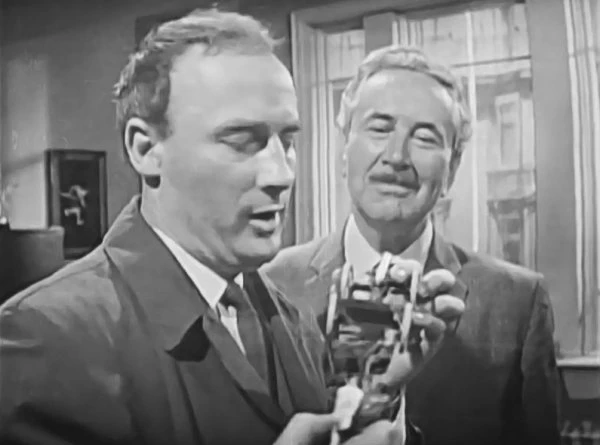
Callan debuted in A Magnum for Schneider, a freestanding one hour play in the long running Armchair Theatre. This was in effect what would now be called a "pilot." A full season of six episodes had already been commissioned and was shown a few months later. They did not hang about in those days.
Three more seasons followed over the next five years, with longer than usual gaps due to the other commitments of its in-demand star, Edward Woodward. The first two seasons were filmed in black and white: sadly, ten of their twenty one episodes are now missing, presumed wiped, and the picture quality of the survivors is variable. The last two seasons were made in colour and are happily intact.
The plot of A Magnum for Schneider is of particular interest because it contains elements that recur time and time again in Mitchell's subsequent dealings with Callan. A jaded and disillusioned Callan is out of "the Section" but is offered the chance to come back in if he murders a man he comes to like after they bond over a mutual interest in wargames and militaria.
Although 'The Good Ones Are All Dead,' the first regular episode of the series proper, is a direct sequel to A Magnum for Schneider, and references it specifically, in many ways it feels like a remake. The difference is that Callan's mission this time is to keep his victim alive and they do not bond over a shared interest. Instead, Callan develops a strange sympathy based on his own wish that he could leave his past behind him. In the end it is the reverse of A Magnum for Schneider, but Mitchell is clearly playing variations on the same theme.
Mitchell also returned that to theme when he issued a faithful novelisation of A Magnum for Schneider in 1969 as 'Red File for Callan.' A superior example of the genre, it was in turn adapted into a full feature film, also titled simply Callan, in 1974, two years after the series ended.
Watching the two, it is astonishing how closely the filmscript follows the original Armchair Theatre teleplay. This really should not be so surprising, given that the novel is a faithful adaptation of the play and the film a faithful adaptation of the novel. Even so, the main sequence of events is basically the same, as is much of the dialogue.
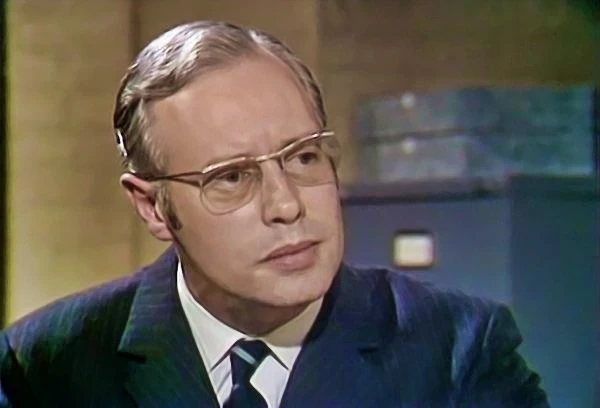
The main difference in the dialogue is that it sometimes seems to reference events in the series. Yet there are inconsistencies in this, allegedly for legal reasons. For example, the shady psychiatrist Snell (Clifford Rose) is introduced as if Callan did not know him.
The differences in the sequence of events are relatively minor inserts to open up the story a bit for cinematic purposes. The most memorable is a particularly well staged car chase sequence - director Don Sharp really knew his business there, so one can forgive the fact that the pretext does not stand up to scrutiny. An extended subplot about the acquisition of a magnum enables Callan to show off his unarmed combat skills, and its consequences provide a convenient excuse for the terrifying cameo by Rose, who steals his scenes effortlessly. They really add nothing to what is really a thin story, suitable for a one hour play rather than a trip to the cinema.

There are some nice exteriors of London in the early 1970s, and one of them is used very cleverly to show how to spot and ditch a tail. In general, however, the production values, while far superior to those of the television series, would not pass muster today in episodic drama, never mind the big screen. It was a notoriously bad time for the British film industry, and budgetary constraints are obvious. It also must be said that 1970s notions of style and glamour have not aged well.

Some money was evidently splashed out on a strong cast, including Carl Mohner, Catherine Schell, Eric Porter, Peter Egan, Kenneth Griffith, Nadim Sawalha, Dave Prowse, and Don Henderson in a small supporting role. Even this was not necessarily to its advantage: although Porter and Egan both give fine performances, one rather misses William Squire and Anthony Valentine in their respective roles as Hunter and Meres. Apart from Woodward and Rose, the only thing the film cast has in common with the series is Russell Hunter as Callan's fixer "Lonely" - because he is simply irreplaceable.

The film had a polite reception, but it was obviously never going to crack the American market and it did not do well enough commercially to launch a film franchise - a concept that was in any case then out of fashion.
Instead Callan had a rather undignified ending in the form of a distinctly odd "television movie" called Wet Job in 1981. One might think the title appropriate in more ways than one.

It is obviously intended as another of Mitchell's variations on his theme in A Magnum for Schneider. Callan is again out of "the Section," except this time he seems happy about it and has to be blackmailed, rather unconvincingly, to do the traditional "one last job." Again, he meets his prospective victim, played by George Sewell, through his interest in militaria - he is now running a somewhat dodgy looking shop where the man just happens to turn up - but they never bond, or indeed develop much of a relationship of any sort.
There are some good things in Wet Job. Above all, there is a nostalgic delight in seeing Callan and Lonely reunited one last time. Lonely has an unexpected new business, the name of which may raise a smile, and it is pleasant to see him given a happy ending after years of abuse - not least by Callan.
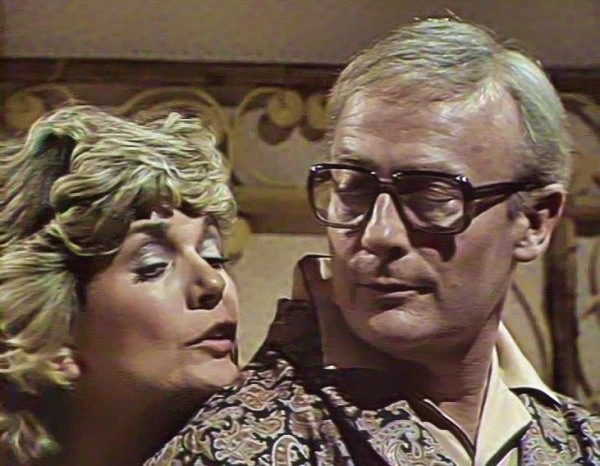
However, the director seems to have been under the impression that he was directing an Alan Ayckbourn play rather than an action thriller, the soundtrack is intrusive, and, it has to be admitted, the seven years since the film had made a big difference to Woodward. In 1974, he still looked like a hard young man, but by 1981 he was distinctly middle aged, halfway to his avuncular character in Common As Muck.
The fifth retread of Mitchell's A Magnum for Schneider plot - play, episode, novel, film, and TV movie - was therefore one too many, and any thoughts of extending the franchise ended with it.
The real legacy of Callan was already being established elsewhere. In those American conspiracy thrillers, the Callanesque ruthless but conflicted State sponsored assassin was already becoming something of a trope. In Sydney Pollack's 1975 Three Days of the Condor, the contract killer Joubert - a masterly performance by the great Max von Sydow - is shown relaxing by painting a model soldier, a direct reference to Callan's favourite pastime.
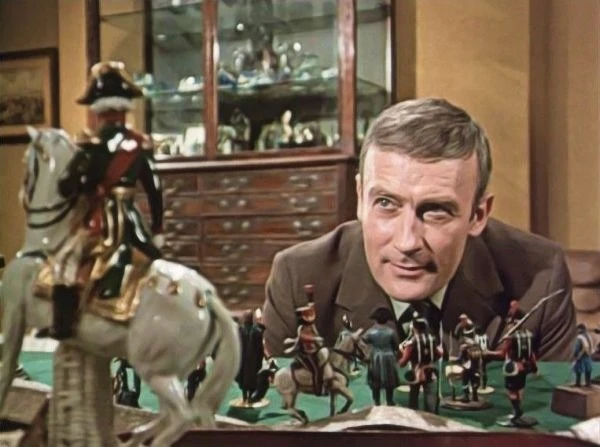
Incidentally, Callan's interest in wargames and military modelling was shared by Woodward himself, who became something of a "cult" figure in his own right in wargaming and modelling circles during the 1970s.
Since wargaming was a very expensive hobby in its pre-computer days, Woodward still had to earn a living to pay for his model soldiers. Although his film roles, most impressively Breaker Morant, tended to attract high praise, he never became the big movie star many assumed that he would. This is probably why he accepted Wet Job, but its predictable failure to relaunch the franchise left him with limited options in his homeland.
So he crossed the Atlantic to considerable commercial success with The Equalizer, one of the first examples of what is now a huge subgenre of "black ops" specialists trying to build a new life. In many ways Robert McCall, the hero of The Equalizer is an older, more stylish Callan, Americanised and sanitised for major US network consumption.
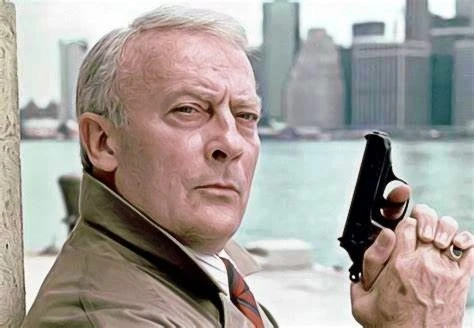
Very much a product of its time, The Equalizer was a smoothly produced show, far more polished than Callan. It earned Woodward some serious American money, a Golden Globe, and four Emmy nominations. A prophet is not without honour except in his own land.
For Callan was beginning to look prophetic. Mitchell's invention of a "dirty tricks department" may have seemed like fantasy in the 1960s, but it was accepted as fact by 1980s audiences watching Iran-Contra unfold. They might have been a bit premature, because the astonishing thing about Iran-Contra in retrospect is how amateur it was.
That has now changed. Ironically it was in the aftermath of the Cold War, and its replacement by asymmetrical warfare, that "black ops" became more official. The War on Terror turned into Callan on an industrial scale. The United States military alone is estimated to have over 60,000 people employed in various special operations roles, in addition to the CIA's paramilitary Special Activities, the DIA's battalion sized Clandestine Service, and private military contractors.
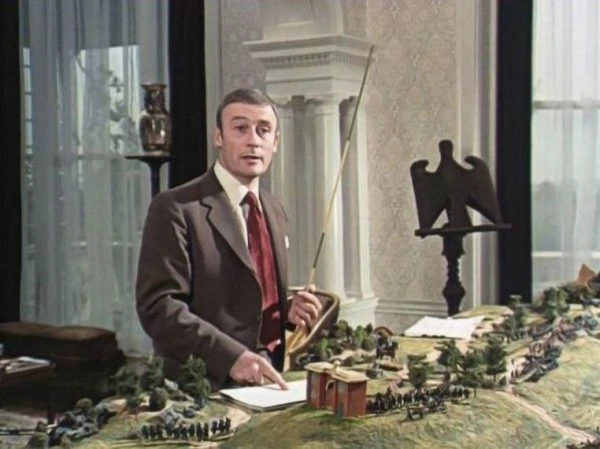
There are therefore thousands of real-life Callans and McCalls out there, and not a few on film and television. The 'Taken' films are a good example, and the cinematic rebooting of The Equalizer with Denzel Washington is obviously an even more direct descendant. The subgenre is now so well established that it includes satires of itself such as 'RED.'
There is a generally accepted basic pattern. The retired "black ops" specialist wants to put his past behind him, but finds that his special skills are still useful - because he needs to earn a living or because bad people intrude on his peace or simply because there is nothing else he can really do.
He usually has flashes of guilt to make him more sympathetic, but they never get in the way of his turning into a remorseless killing machine when required. His former employers, if seen, are invariably ruthless and untrustworthy. As often as not, they are the bad people intruding on the hero's peace. Either way, he is never going to be allowed to enjoy that peace, because repentance does not mean escaping the consequences of the sins of the past. That seems to be the moral of all these projects. There really is no rest for the wicked.
It may be the defining story of our time, and it all began with a British television show over fifty years ago. So far it has rarely, perhaps never, been done better.
Published on November 7th, 2022. Written by John Winterson Richards for Television Heaven.


